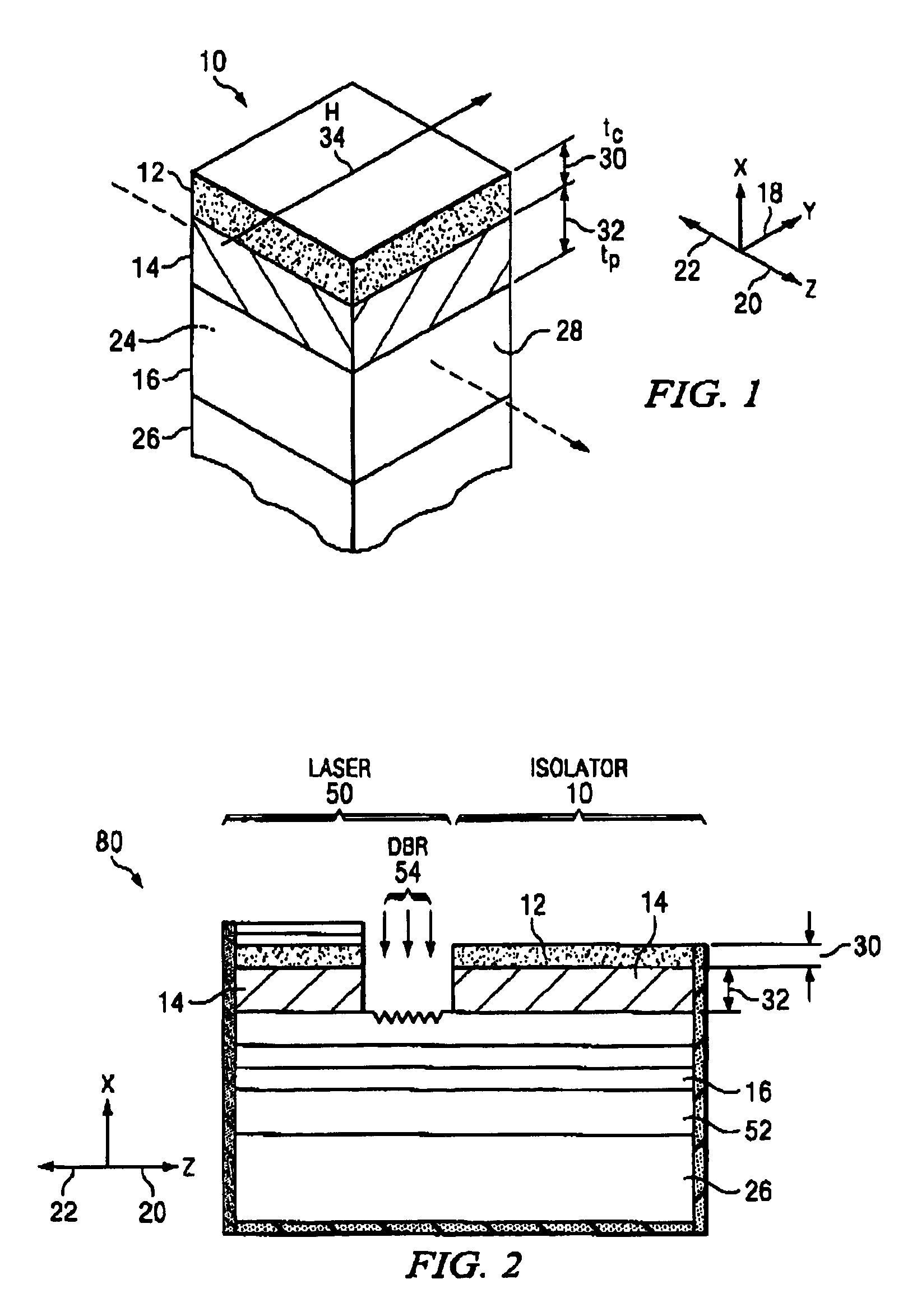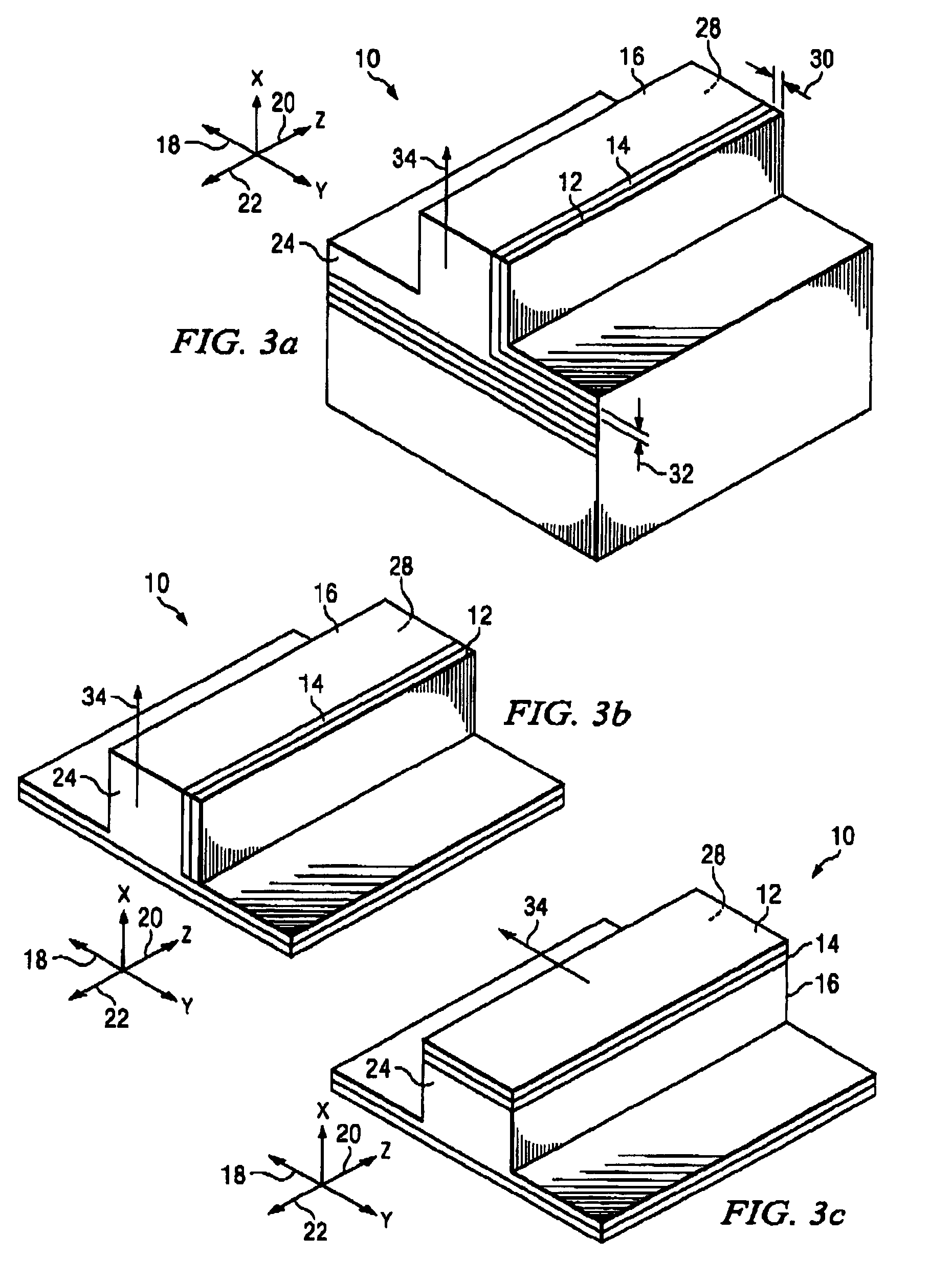Ferromagnetic-semiconductor composite isolator and method
a composite isolator and magnetosemiconductor technology, applied in the direction of optical elements, optical waveguide light guides, instruments, etc., can solve the problems of complex manufacture and implementation high cost and complexity of conventional optical isolators, and inability to meet the requirements of high-efficiency optical isolators, etc., to achieve reliable and efficient interfacing, reduce overall cost, and improve reliability and cost
- Summary
- Abstract
- Description
- Claims
- Application Information
AI Technical Summary
Benefits of technology
Problems solved by technology
Method used
Image
Examples
first embodiment
[0056]Two examples or embodiments of the FC layer 12 are provided below. The first embodiment uses an FC layer 12 with iron particles in GaAs deposited on the p-cladding of the second clad layer 14 of a multi-quantum well laser type structure with layers as listed in Table 1 below for operation at a wavelength of 1.3 μm (nm). At this wavelength, GaAs has a refractive index of 3.45 which is higher than the refractive index of the p-clad of AlInAs of the second clad layer 14, which is 3.231. These values satisfy the need to have the material of the FC layer 12 in which the iron particles are positioned with a refractive index equal to or greater than that of the p-clad of the second clad layer 14. The cutoff thickness for the FC layer 12 is shown in Table 3 below.
[0057]At a second clad layer 14 p-clad thickness of tp=3.0 μm and an FC layer 12 thickness tc=0.32, the isolation is 111 dB / cm with insertion loss of only 6.3 dB / cm giving the excellent isolation-to-loss ratio of 17.6 in unit...
second embodiment
[0066]the FC layer 12 for operation at a wavelength λ of 1.55 μm is described next. In this embodiment, the FC layer 12 uses iron particles in silicon deposited on the p-cladding of a multi-quantum well laser structure with layers as listed below in Table 2. The thickness 30 of the FC layer 12 and the minimum thickness 32 of the p-clad layer of the second clad layer 14 is determined as described above. At λ=1.55 μm, silicon had a refractive index of 3.4 and the p-clad of InP has a refractive index=3.163. These values satisfy the need to have the semiconductor material of the FC layer 12 with an index of refraction equal to or greater than the index of refraction of the p-clad layer 14. The cutoff thickness for the FC layer 12 is shown below in Table 3.
[0067]
TABLE 2An Isolator using Fe-Silicon FC layer 12 deposited on a typicalMQW structure is using quaternary semiconductor layers foroperation in the 1.55 μm region. This can be fabricated on thesame material as a laser or amplifier. ...
PUM
| Property | Measurement | Unit |
|---|---|---|
| thickness | aaaaa | aaaaa |
| thickness | aaaaa | aaaaa |
| thickness | aaaaa | aaaaa |
Abstract
Description
Claims
Application Information
 Login to View More
Login to View More - R&D
- Intellectual Property
- Life Sciences
- Materials
- Tech Scout
- Unparalleled Data Quality
- Higher Quality Content
- 60% Fewer Hallucinations
Browse by: Latest US Patents, China's latest patents, Technical Efficacy Thesaurus, Application Domain, Technology Topic, Popular Technical Reports.
© 2025 PatSnap. All rights reserved.Legal|Privacy policy|Modern Slavery Act Transparency Statement|Sitemap|About US| Contact US: help@patsnap.com



